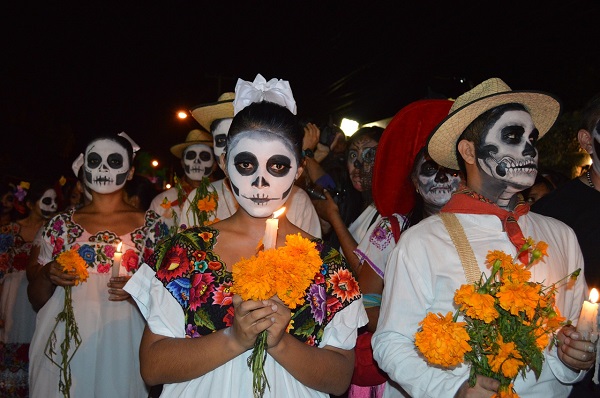The Day of the Dead – known in Mexico as the Día de los Muertos – is an annual celebration that continues across the first two days of November. This festivity takes place throughout the country and is a celebration of life and death. Families appreciate their lives together and commemorate their loved ones who have died. This celebration finds its beginnings in Mesoamerican culture and is connected with All Souls Day but enjoys widespread practice today.
As is the case with most popular celebrations, the Day of the Dead has many traditions and customs practiced, depending on where you are on the day and with whom you celebrate.
Fascinating Ways to Celebrate the Day of the Dead
The following are some of the most fun and interesting ways to celebrate the Day of the Dead in Mexico. Many people choose to make their fall vacation in Mexico across November 1 and 2 to see and experience some of these components of the celebrations.
Building Altars
Building altars (altares) can likely be considered the central tradition for celebrating the Day of the Dead. Altars are typically constructed with bright orange and purple decorations before offerings (ofrendas) are piled on top of it. These can include everything from flowers and candles to personal possessions. These are typically built at home as more private components of the celebrations. That said, there are certain communities, such as Pátzcuaro, families build their altars at a deceased loved one’s graveside. It is also common for most public buildings to construct altars. The outcomes can be astounding as planning altars can take months.
Making Offerings
Along with the construction of the Day of the Dead altars comes the practice of making offerings to the dead. The tradition states that these offerings encourage deceased loved ones to return home again to hear the prayers of the living. The offerings are different depending on the day they are made.
November 1 is the Día de los Inocentes, when toys and sweets are offered to children who have died. November 2 is focused on offerings for deceased adults. These include candles, football shirts, cigarettes and alcohol, as well as Mexican marigolds (cempasúchiles), and sweet bread called pan de muerto.
Day of the Dead Sugar Skulls
Sugar skulls are likely the most recognizable symbol of the Day of the Dead festivities. Families either make or buy them to add to their altars. The deceased’s name is frequently written in icing on the forehead of the sugar skull. Beyond the traditional versions made from sugar, chocolate and biscuit forms are also typically available at this time.








